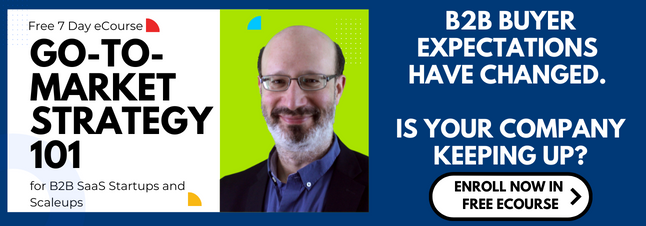Intentional B2B lead generation helps companies educate and build trusted relationships with the right people, in the right places, at the right time, and in the proper context. But many in B2B lead generation use an outdated playbook that provides a lousy prospect experience and burns goodwill.
In this blog post, you’ll learn why intentional B2B lead generation starts by reverse engineering the down-funnel outcomes you want to achieve, how different kinds of website assets generate leads for different buyer’s journey stages, and what intentional B2B lead generation done right looks like.
B2B buyers research and make purchase decisions very differently than they did as recently as a few years ago.
Yet, many marketing and sales teams still generate leads using the same playbook from 10 or 20 years ago.
Left unchecked, this living-in-past stubbornness frustrates prospects, makes your company look completely clueless, and fails to establish the kinds of trusted advisor relationships your team so badly needs in B2B sales contexts. Kind of the opposite of intentional B2B lead generation for today’s buyers.
At a macro level, keep the following in mind:
- Gartner found that 83% of a typical B2B purchase decision -- researching, comparing options, and evaluating pricing -- happens before a potential buyer engages with a vendor.
- McKinsey & Company discovered that 70% to 80% of B2B decision-makers now prefer to make decisions digitally.
- And in its B2B Thought Leadership Impact Report, LinkedIn, in partnership with Edelman, concluded that “thought leadership remains critical to customer engagement, but breaking through the noise is harder than ever.”
Three different kinds of website pages and the role of each
To get the right kind of intentional B2B lead gen strategy in place, let’s look at three different kinds of website pages and the role of each during the awareness, consideration, and decision stages of the buyer’s journey.
Website pages, landing pages, and blog posts live within your content management system (CMS). But each serves a different purpose when engaging prospects with more intentional lead generation.

As a side note: Your go-to-market strategy will not work anymore without a content management system -- as you’ll have no practical way to manage content. So if your company’s website isn’t built on top of a modern CMS, your tech stack needs that investment sooner rather than later.
The buyer’s journey is the active research process that someone goes through in between when first articulating a problem to solve, a goal to achieve, or a question to answer -- and the ultimate purchase decision.
Buyers typically progress through the three stages: awareness, consideration, and decision.
Website pages vs. landing pages vs. blog posts
Within your website, website pages typically support the decision stage of the buyer’s journey.
Here you’ll find:
- Product marketing content that explains your products and services
- Content about your company
Landing pages can be used throughout the entire buyer’s journey: awareness, consideration, and decision
Landing pages are specialized website pages that primarily convert visitors into leads.
Blog posts usually support the awareness stage of the buyer’s journey.
Blog posts
- Fuel your entire content marketing strategy -- SEO, social media, and email
- Drive sales cycle acceleration and even greater levels of customer success
So to review:
- Website pages support the decision stage of the buyer’s journey.
- Landing pages support any or all three stages of the buyer’s journey.
- And blog posts usually assist with the awareness stage of the buyer’s journey.
And within each kind of page, you’ll almost always find one or more contextually relevant calls to action (CTAs) that support a particular lead generation goal unique to one or more buyer personas and that particular buyer’s journey stage.
And if you’re serious about Intentional B2B Lead Generation...
Learn more when you enroll now in our free 7-day eCourse: Go-to-Market Strategy 101 for B2B SaaS Startups and Scaleups.


